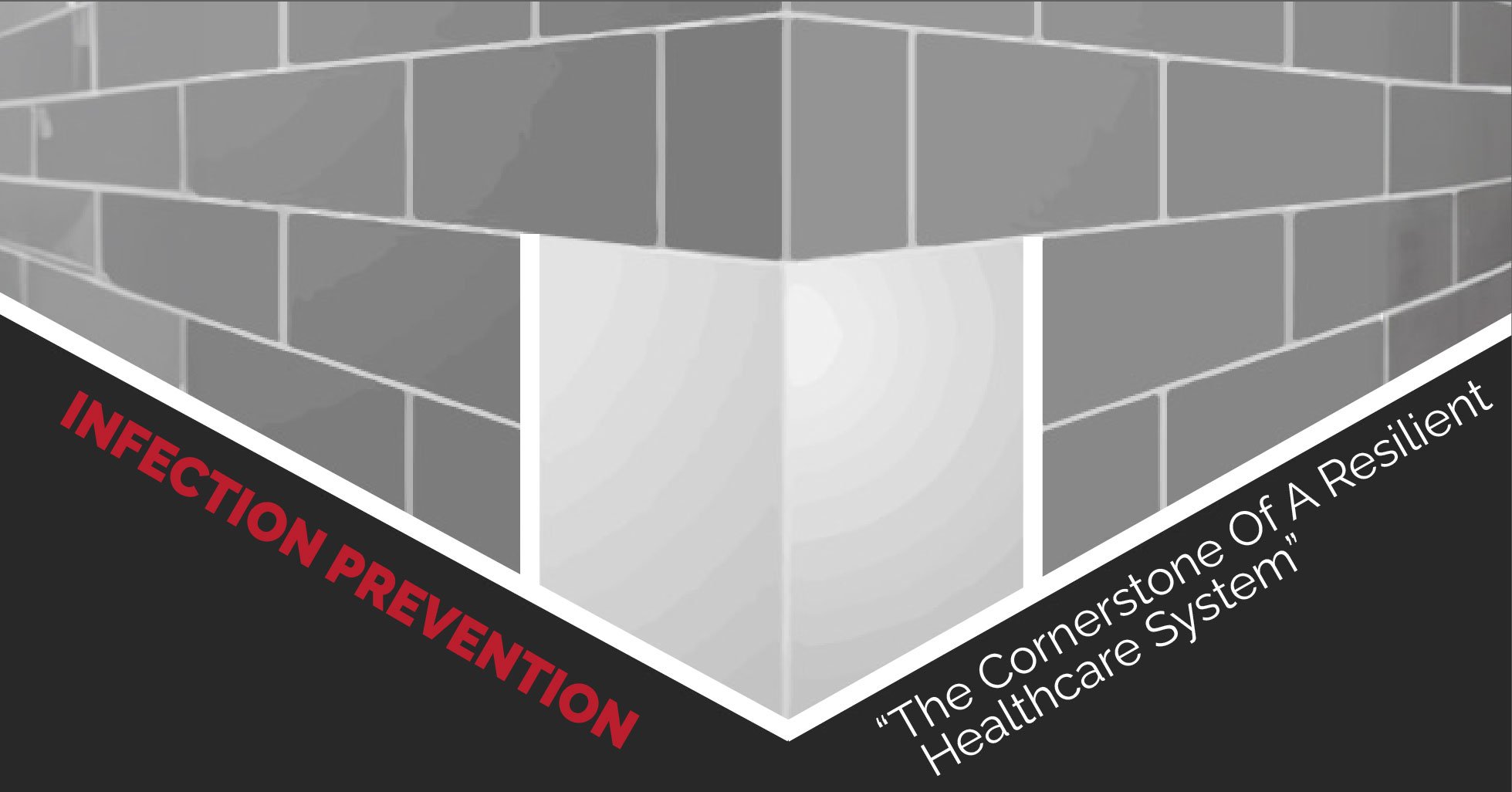By their very nature, hospitals both serve the most vulnerable people and host the most powerful...
Infection Prevention: "The Cornerstone of a Resilient Healthcare System"

Erica Mitchell
3
min. read
 The Centers for Disease Control's Global Safe Healthcare division refers to infection prevention and control as "the cornerstone of a resilient healthcare system and protects health workers, patients, and the surrounding community." This quote got us thinking about the role of a cornerstone, and how it does indeed reflect the critical position IC plays in community health. In today's post, we'll see just how far this metaphor goes in capturing the many ways infection control and prevention impacts quality healthcare.
The Centers for Disease Control's Global Safe Healthcare division refers to infection prevention and control as "the cornerstone of a resilient healthcare system and protects health workers, patients, and the surrounding community." This quote got us thinking about the role of a cornerstone, and how it does indeed reflect the critical position IC plays in community health. In today's post, we'll see just how far this metaphor goes in capturing the many ways infection control and prevention impacts quality healthcare.
First, what is a cornerstone? In the early days of construction, the cornerstone was a well-hewn block with carefully-squared corners that was placed at the location where two walls would meet. Cornerstones were not only structurally important, but symbolically rich in meaning, with rituals and ceremonies accompanying its placement. As a result, the term has survived in its contemporary use as a figure of speech because it carries with it the combined meanings of physical and spiritual strength. To be considered a "cornerstone" of something is to be considered foundational and essential, as well as carrying with it hopes and dreams for the future. Let's see how this rich metaphor can explain the importance of infection control.
1. The cornerstone determines the boundaries of the building and the direction of the construction. Imagine healthcare system that begins with infection control and prevention and determines all future construction steps based on the premise of keeping patients safe from pathogens! Keeping infection control and prevention central to healthcare design means each space is easy to clean, with biocidal materials on high-touch surfaces, as well as workflow designs to minimize transmission.
2. The cornerstone provides a guide to the builders to make sure the walls are built straight and true. Healthcare systems have decision-making guides that play a significant role in setting the culture and philosophy for the facility. If infection control and prevention is a part of this decision-making philosophy, keeping patients safe from pathogens will be considered during plans for renovation, investment, growth, and outreach. On a more granular level, each department and staff member would be aware of their role in infection prevention, and understand that IP protocols are the responsibility of everyone.
3. The cornerstone provides a structural component that unites two walls, allowing them each to gain strength from the other. When infection control and prevention are integrated into all facility departments, it can serve as a unifying force that makes all units stronger. If kept separate, IP quality can be vulnerable to lapses in consistency depending on the department, loss of progress due to staff turnover, and lack of "big picture" thinking about long-term investments and facility-wide initiatives.
4. The cornerstone is placed with ceremony, a public declaration of the community gathering in support of the building as well as the building serving the needs of the community. When infection control and prevention is the star of a facility, it demonstrates to patients, staff, and the community that the facility puts safety first, that they will "first, do no harm." While we have moved beyond the days of burying sacrifices under the cornerstone to protect the building and its inhabitants, we still need public displays of commitment to the future. When facilities take the time to publicly recognize the goals and achievements of their IP program, they are accountable to their communities and help build trust.
5. The cornerstone can become symbolic alone, only holding a date but not supporting the structure at all. We can't examine the cornerstone metaphor without also considering its potential to be relegated to a one-day ceremony and then forgotten. As with any goal or philosophy, a commitment to infection control and prevention requires daily attention, continuing research, and constant surveillance. There are certainly showy ways of performing "hygiene theater," that is, the public use of measures that give the illusion of sanitation but are really not helping keep patients safe. Many of these measures fall under the category of treated articles - products that have ingredient that help control mold, mildew, and odor-causing bacteria but that do not have public health claims. So many of these products flooded the marketplace during COVID-19 and can still be seen in some public areas: "Antimicrobial" elevator buttons, floor stickers, and the like. To truly keep infection control as the cornerstone of healthcare, we need to be vigilant that products are EPA-registered, tested by independent researchers and laboratories, and stand the test of time under real-world conditions.
In the past, cornerstones were thought to be like "seeds from which buildings would germinate and rise." Their position was carefully chosen, their corners were expertly squared, and they were placed with great ceremony and community involvement. All the hopes and dreams for the building and its inhabitants were laid along with the stone, which would then physically and symbolically hold up the building for generations to come. We should have the same attitude about infection control and prevention: There is no better place to "first, do no harm."
![EOScu Logo - Dark - Outlined [07182023]-01](https://blog.eoscu.com/hubfs/Eoscu_June2024/Images/EOScu%20Logo%20-%20Dark%20-%20Outlined%20%5B07182023%5D-01.svg)




